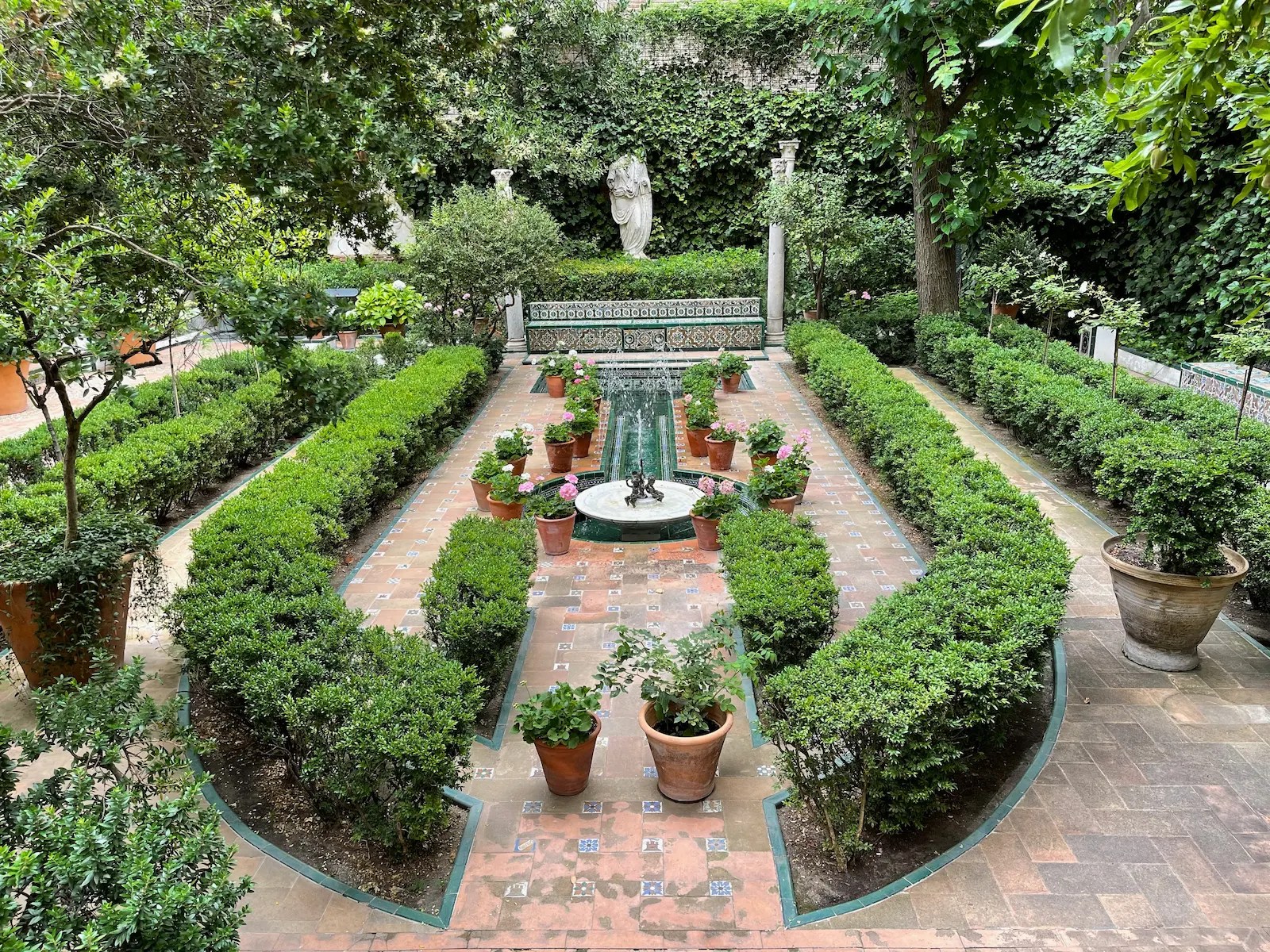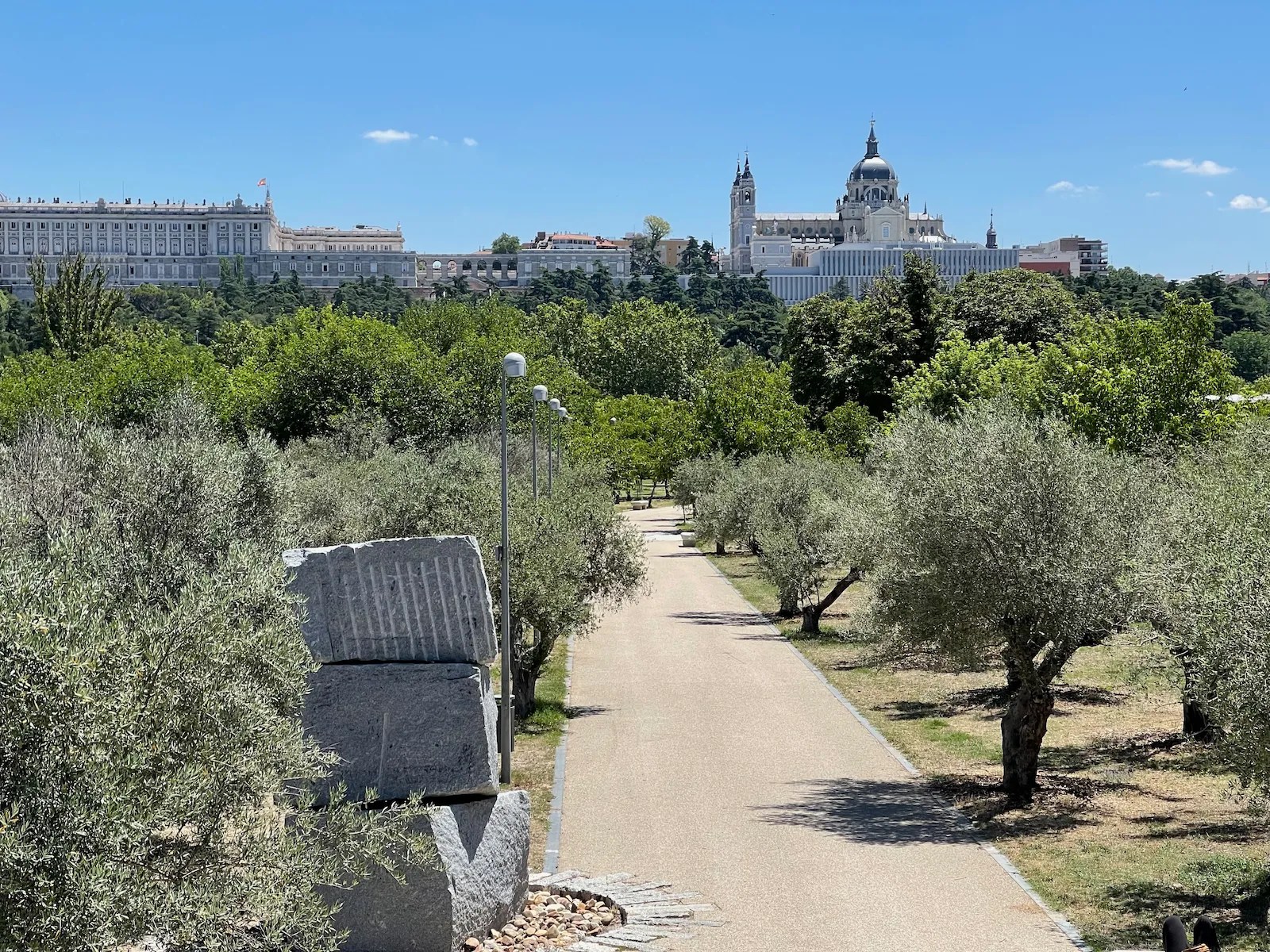Updated Oct. 1, 2025.
Table of contents (click to embiggen)
My eyes light up when people tell me they’re headed to Madrid. The short time I lived there as a kid gave me a long-lasting and deep connection to the city. Like a true Madrileño, I root for Real Madrid and get very defensive when someone suggests Barcelona is a better city. (It’s not.) I still speak with a Castilian accent because that’s what I learned. (The fact that it makes me sound pretentious is just a bonus!)
Last fall, a friend said he and his husband were heading to Madrid. I started firing off suggestions of what to see and do. Then I sent about two dozen texts as more ideas popped into my head. It was a deluge of disorganized information—like giving someone jigsaw puzzle pieces with no picture to help them.
In December, someone else was headed to Madrid. My recommendations were once again a useless jumble of names and places. Not very helpful.
Fast forward to a few weeks ago. A colleague told me he and his wife are headed to Madrid this spring, and again I offered to provide some suggestions. This time, I’m going to do it right by writing everything down and providing some structure. Not only is this a more useful approach, but I can use it again when people say they’re going to Madrid.
In true Daily Dave fashion, this list is more verbose than it needs to be. Hey, it’s my blog and I’ll write as much as I want to!
Eating and Drinking
Churros y Chocolate
If you go to Madrid and don’t try churros y chocolate, have you really been to Madrid?
No, you haven’t.
First, the churros: Forget all about those baseball bat–sized dough sticks at Costco. Real churros are smaller and thinner; every bite is the perfect balance of fluffy and fried.
Not only are they delicious, but they are also the perfect delivery system for Spanish hot chocolate, which is nearly as thick as pudding. You should be able to balance your spoon on the surface.
The most famous place for churros y chocolate is Chocolatería San Ginés, but I’ve only been there once or twice. It feels touristy. You’ll find great churros and hot chocolate pretty much anywhere in Madrid, even at the chain churrarías.



Gazpacho
The best gazpacho in the world is made by my mom, but you can’t go wrong ordering it in Madrid.
Sangria
You can get this practically everywhere, from cheap bars to high-end restaurants. I am a purist, so if it’s not red, it’s not real sangria. The word “sangria” comes from “sangre,” which means blood, so why the hell would it be white? Who has white blood?1
Iberian Ham (Jamón Ibérico)
You’ll find this all over the place. The good stuff ain’t cheap.

The Gourmet Experience at El Corte Inglés (at Princesa)
This is a high-end food hall on the ninth floor of a department store. The food is expensive but good. The views more than justify the inflated prices. (This El Corte Inglés location spans three buildings. I can’t remember which one the Gourmet Experience is in. Look for the signs. If you end up in ladies’ lingerie, good for you! I’m sure you look great in it!)
VIPS
VIPS (pronounced “beeps”) was our late-night hangout in school. Imagine a better, cleaner, friendlier Denny’s, and you’ll have a good idea of what VIPS is like. It’s a nostalgic favorite. There are locations all over Madrid.



Museums
El Prado
This is where Spanish art, history, and culture come together. We had many a field trip there when I was in school! Two paintings to check out:
- Las Meninas by Diego Velázquez is the most famous and well-known painting here. I like it because it tells a story about palace life, instead of just being a typical royal portrait. My favorite detail is the mirror: That’s the king and queen, but if it were a real mirror, the viewer would be in the reflection.
- Saturn Devouring His Son by Goya will haunt your dreams. It’s really, really, really fucked up. You’ve been warned.

Museo Reina Sofía
This is Madrid’s modern art museum. I think it’s right up there with MOMA, the Tate Modern, and the Pompidou Center. Picasso’s Guernica is the most famous painting here. It’s huge and there are always crowds milling in front of it, so don’t expect to take a good picture.
Thyssen-Bornemisza Museum
Along with El Prado and Reina Sofia, this is part of Madrid’s Golden Triangle of Art. It’s not as impressive as the other two, in my opinion.
Museo Sorolla
Well outside the Golden Triangle, this is a small and interesting museum dedicated to Joaquin Sorolla. The building is his former home, which is nicely preserved and has a cute garden. If you visit, you can easily walk to the Salamanca neighborhood and check out Calle Serrano (which I’ll write about below).


Historic Sites
The Royal Palace
The palace is quite imposing, but would it hurt them to add a spot of color somewhere?

There are more than 3,000 rooms, which makes me wonder if this happens.2


Plaza Mayor
This is a large historic square in the middle of the city. Since it’s a tourist magnet, you should probably skip the restaurants here. If you do a walking tour, this is probably where it will start.


Helpful tip: Do a free guided walking tour on your first day. You’ll hit all the historical sites around Plaza Mayor and the Royal Palace. There are just too many historical things for me to list.
Parks
Casa de Campo
Casa de Campo is huge. Like, really huge. It’s twice the size of Central Park (I think). The area closest to the city center still feels natural and unspoiled, with lots of walking trails and great views of Madrid. Further away, you’ll find an amusement park, zoo, aquarium, soccer stadium, and more things like that. We went on a field trip to the amusement park when I was a kid, and all I remember is that the rides seemed worn out and creaky. I imagine they have been fixed up since then.
If you go to Casa de Campo, check out the area around the lake, which is directly east of the Royal Palace. It’s a great place to stroll around, do some people-watching, and even grab a bite to eat. You can also rent a kayak, which Britt and I would not do because we’re landlubbers.


El Retiro
Whereas Casa de Campo has size, El Retiro has charm. It’s still pretty darn big, but it feels more like a proper European city park, with formal gardens, sculptures, a colonnade, fountains, and such. There are also plenty of places to eat.3


Be sure to look for el Palacio de Cristal (The Glass Palace), which is built out of glass and cast iron. I imagine it was what the Crystal Palace in London looked like before it burned down. If you get there late in the afternoon, you’ll be able to see the sun streaming through the windows.

Puerta de Alcalá
The Plaza de la Independencia is located at one of the entrances to el Retiro. There you’ll find two incredibly important and historically significant landmarks: the beautiful Puerta de Alcalá and my dad’s old office building.
A related fun side note: When I took my AP History test in [year redacted], the surprise essay question was about the Spanish Civil War and there was a picture of fighting at the Puerta de Alcalá. I aced the shit out of that essay.

Rio Madrid
When I lived in Madrid, I didn’t even know there was a river running through the city. It was completely blocked in by the M-30, which means my family drove near or around it too many times to count and I never noticed it.
Now, the river is hard to miss. That long stretch of the M-30 has been moved underground, opening both sides of the river to development. It’s now a beautiful linear park with lots of places to walk, run, rest, and have fun. Britt and I first explored Río Madrid on Segways, and went back later that day. We can’t wait to go back.
Quick note: The actual name of the river is Manzanares. And it’s really a stretch to call it a river. It’s more of a dried-up creek. Still, it’s an awesome area to visit.



Cool Neighborhoods and Streets
Chueca
It’s the gay neighborhood in Madrid. Hell, it might be the gayest neighborhood in the world—and I’ve been to San Francisco and Provincetown! There are so many Pride flags here that you’ll think a rainbow threw up. All that aside, it’s an awesome part of Madrid with great restaurants and bars. Check out Mercado San Antón, an indoor food market with restaurants and a cool bar.

Puerta del Sol
This is literally the center of Madrid. It’s kilometer zero for the entire highway system—all distances are measured from this spot. Look for:
- The Oso y el Madroño statue: The image of a bear pawing at a strawberry tree has been associated with Madrid for centuries. By the way, guess what no longer lives in Madrid? Bears. And guess what doesn’t grow on trees? Strawberries.
- The Tío Pepe sign: Tío Pepe is a brand of sherry. This sign has been there forever.


Lavapiés
This is a trendy neighborhood with an alternative vibe. It’s where you’ll find tons of street art. I highly recommend taking a guided street art walking tour.

Malasaña
Another cool neighborhood, jam-packed with vintage clothing stores and other cool shops, and totally bereft of chain restaurants. I picked up a lot of cool T-shirts. Get here before Starbucks does.

Gran Vía
This is the main road in the middle of Madrid. The architecture is gorgeous. Britt and I usually try to stay somewhere on Gran Vía because it’s centrally located.


Calle de Preciados
This is a pedestrian street between Gran Vía and Puerta del Sol. A lot of other nice pedestrian streets branch off of it. Here’s where you’ll find the El Corte Inglés department store we went to a lot when I was a kid. It now spans several buildings.4
Calle Fuencarral
You’ll find a little bit of everything on this pedestrian shopping street. It’s often crowded, which makes for great people-watching. It branches off Gran Vía. Here are a few videos from the bad ol’ Covid days:
And no visit to Fuencarral is complete without a visit to the Lindt chocolate store. Lindt has nothing to do with Spain but, hey, chocolate!

El Rastro
This is where you’ll find a massive flea market every Sunday. Expect to have a lot of “I don’t need that, but I totally want it” conversations with yourself.
Calle Serrano
This is the ritziest shopping street in Salamanca, the ritziest neighborhood. Basically, it’s the opposite of el Rastro. Here you’ll find Louis Vuitton, Prada, Burberry, and so on.
Madrileños sometimes say Calle Serrano is the equal of Fifth Avenue, Oxford Street, or the Champs-Élysées. It’s not. It simply lacks the grandiosity and awe you find in New York, London, and Paris. But it’s still a great place to do some window shopping—or, if you’re much wealthier than I, some actual shopping.
Running

I’m glad you asked about this! I’ve got two posts for you to check out:
Getting Around
- If you’re going to and from the airport: Train.
- If you’re getting around the city: Metro.
- If the Metro isn’t convenient: Uber.
- If you want to go insane: Rent a car. The laws of physics don’t apply when you’re driving in Madrid.

Day Trips
From Madrid, you can get nearly everywhere quickly on high-speed rail. Here are two places about 30 minutes away:
Toledo: This is a beautiful old city with a Gothic cathedral (still in use) and a synagogue and mosque (both historic; both, not surprisingly, not in use). The synagogue is now a museum, and the mosque is a church. Toledo used to be known for making steel weapons, so everywhere you go, you can buy full-sized souvenir swords and knives. My brother bought a whole bunch of swords, and I have no idea where they are now.


Segovia: Come for the Roman aqueduct. Stay for the cathedral and fortress! Each of these would be worth a trip on its own, so seeing all three in a day is incredible.


Here’s a video of Segovia I made on the 30-minute train ride back to Madrid that took forever to make because I am an artiste.
If I had to recommend just one place, it would be Segovia. There are plenty of cities with cathedrals and castles in Spain, but only one has an aqueduct like this.
The Last Palabra
I hope you enjoyed my unnecessarily long Madrid travel guide. If you didn’t, you only have yourself to blame. You could have stopped reading at any point.
Footnotes
- I’ve just learned that Antarctic blackfin icefish have white blood. Those guys are allowed to order white sangria. Humans, on the other hand, should be drinking red. ↩︎
- What, you thought I wouldn’t be able to work a Simpsons reference into this blog post? You underestimate my powers. ↩︎
- There’s also a statue of Satan somewhere in el Retiro, but I don’t remember where. ↩︎
- Where does El Corte Inglés rank in my list of favorite department stores? Click here to find out. ↩︎

